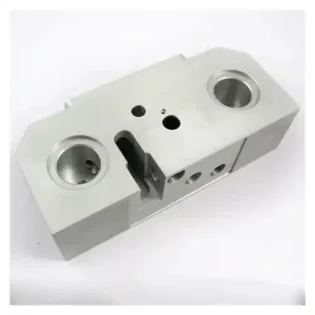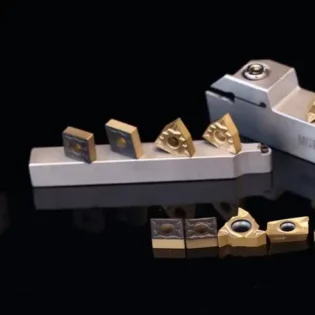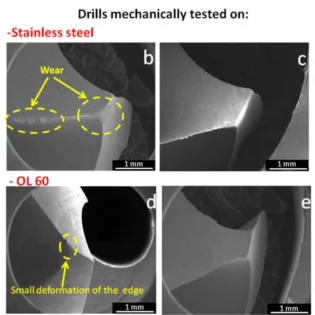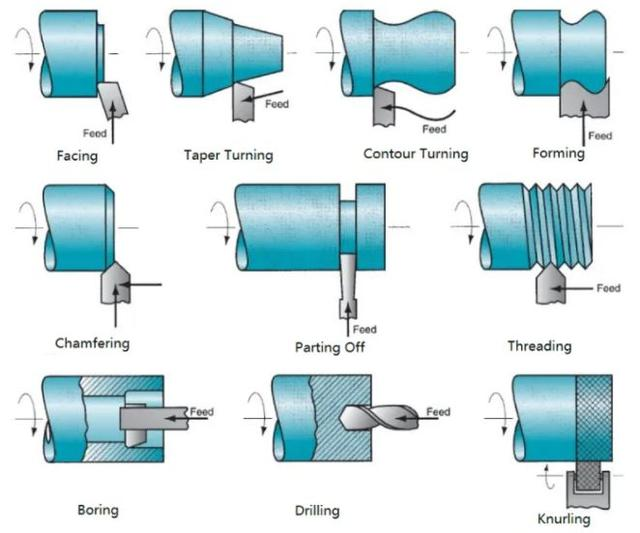
What are CNC Turning Tools?
A turning tool is a tool with a cutting part used for CNC turning. It is one of the most commonly used tools in CNC milling. The working part of the turning tool is the part that generates and processes chips, including the cutting edge, the structure that breaks or curls the chips, the space for chip removal or storage, and the channel for cutting fluid.
Types of Lathe Cutting Tools:
Lathe cutting tools are basically divided into two types based on their usage:
A) Based on the Tool’s Usage Method
B) Based on the Method of Application Feed
A) Based on the Tool’s Usage Method:
There are 11 types of tools:
1.Thread Cutting Tools

They come in two types:
External Thread Tools: Also known as threading tools, used to machine external threads on workpieces.
Internal Thread Tools: Used to machine internal threads inside workpieces.
2.Chamfering Tools
Chamfering tools are used to design bevels or grooves on bolts, chamfering the corners of workpieces. Specific chamfering tools with side cutting angles are needed for extensive chamfering work.
3.Turning Tools
There are usually two types of turning tools:
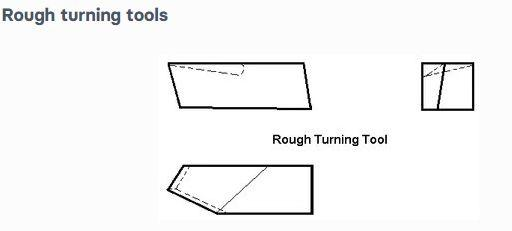
Rough Turning Tools: Used to remove large amounts of metal in a short time with clear cutting angles that can withstand maximum cutting force.
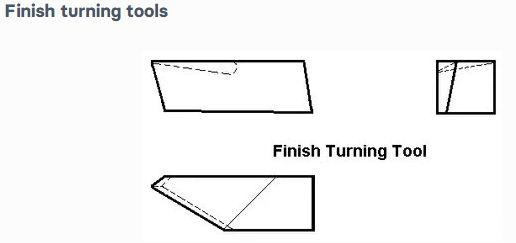
Finishing Turning Tools: Used to remove small amounts of metal, with polished cutting angles to produce very smooth and precise surfaces.
4.Grooving Tools
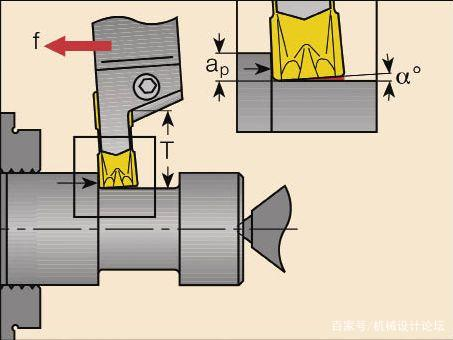
Grooving tools are used to create narrow cavities of certain depths on the cone, cylinder, or surface of parts. The specific shape of the grooving tool depends on the shape of the groove (square, round, etc.).
5.Facing Tools

Facing tools are used to cut planes perpendicular to the axis of rotation of the workpiece, reducing the length of the workpiece by providing a vertical cut to the lathe axis. The cutting edge should be set at the same height as the center of the workpiece.
6.Boring Tools
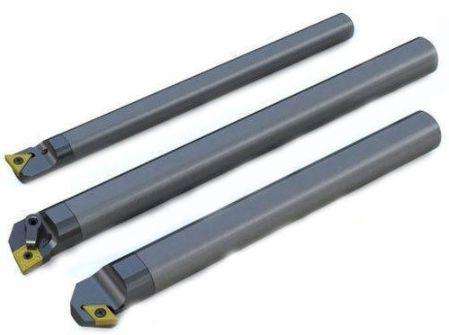
Boring tools are used to enlarge existing holes. When you want to enlarge an existing hole, you need to use a boring bar that can easily enter the pre-drilled hole and expand its diameter.
7.Forming Lathe Tools
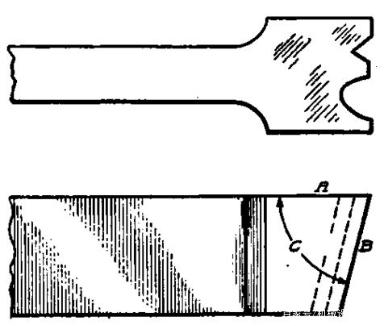
Forming tools are used to create different shapes on workpieces. Special types of holders are used to fix forming tools, allowing operations such as making internal and external radii.
8.Reaming Tools
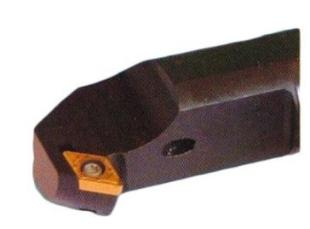
Reaming tools are used to enlarge and position the sleeve heads of screws or bolts, creating pre-drilled holes or holes on the workpiece.
9.Reaming Tools
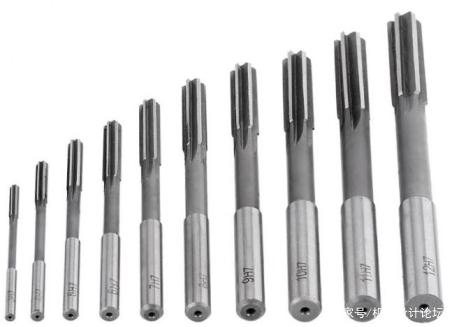
Reaming tools are used for finishing and ensuring dimensional tolerances of drilled or reamed holes.
10.Undercutting? Lathe Tools

Undercutting tools are similar to grooving tools, used to bore large holes at a fixed distance from the end of the hole, often for creating clearance in internal threads.
11.Drilling Tools
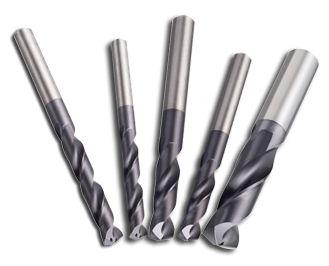
Drilling tools are used to machine cylindrical holes on workpieces, typically fixed on the tailstock drill frame and completed by the tailstock spindle’s movement.
B) Based on the Method of Application Feed:
There are three types:
12.Round Nose Tools
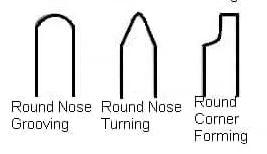
Used for finish turning, round nose tools have no side or back rake angles and can cut in other directions.
13.Right-Hand Tools
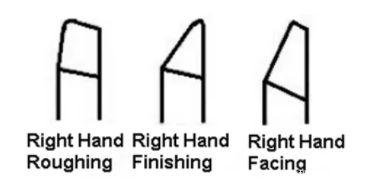
These tools remove material when moving from right to left (with the cutting face on top in the top view). Named by analogy to the right hand, the primary cutting edge is on the left side.
14.Left-Hand Tools
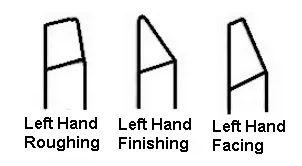
Opposite to right-hand tools, these remove material when moving from left to right (with the cutting face on top in the top view). Named by analogy to the left hand, the primary cutting edge is on the right side.
How to Choose Lathe Tools
Selecting lathe tools requires understanding certain factors related to the equipment. Here are crucial factors to consider:
Type of Material: The type of material you’re cutting determines the type of lathe tools you can use. Important properties to note include hardness, wear resistance, toughness, and stiffness. Extremely hard materials may require carbide or diamond tools.
Shape of the Tool: The shape of the lathe tool is another factor to consider, with the cutting edge’s position determining the cutting direction (right-hand, left-hand, or round nose tools).
Shape of the Workpiece: Each type of lathe tool leads to specific shapes. You must integrate the desired shape into the lathe tool. Due to the complexity of most CNC machined products, you may need a combination of several lathe tools.
Sumário
In practical cutting processes, familiarity with CNC machining and turning processes, along with extensive practical experience, will make choosing the right type of lathe tool more manageable and effective.






